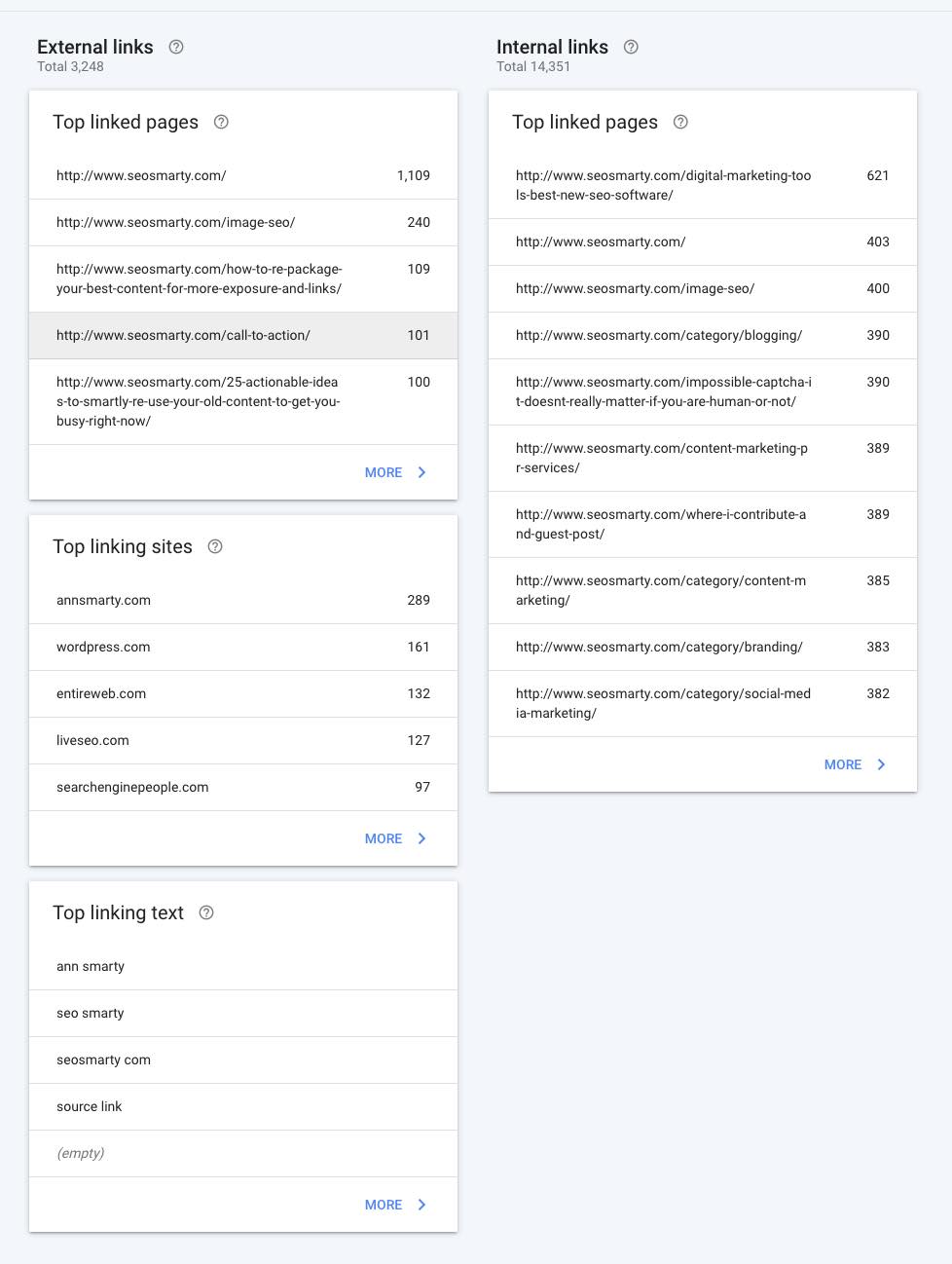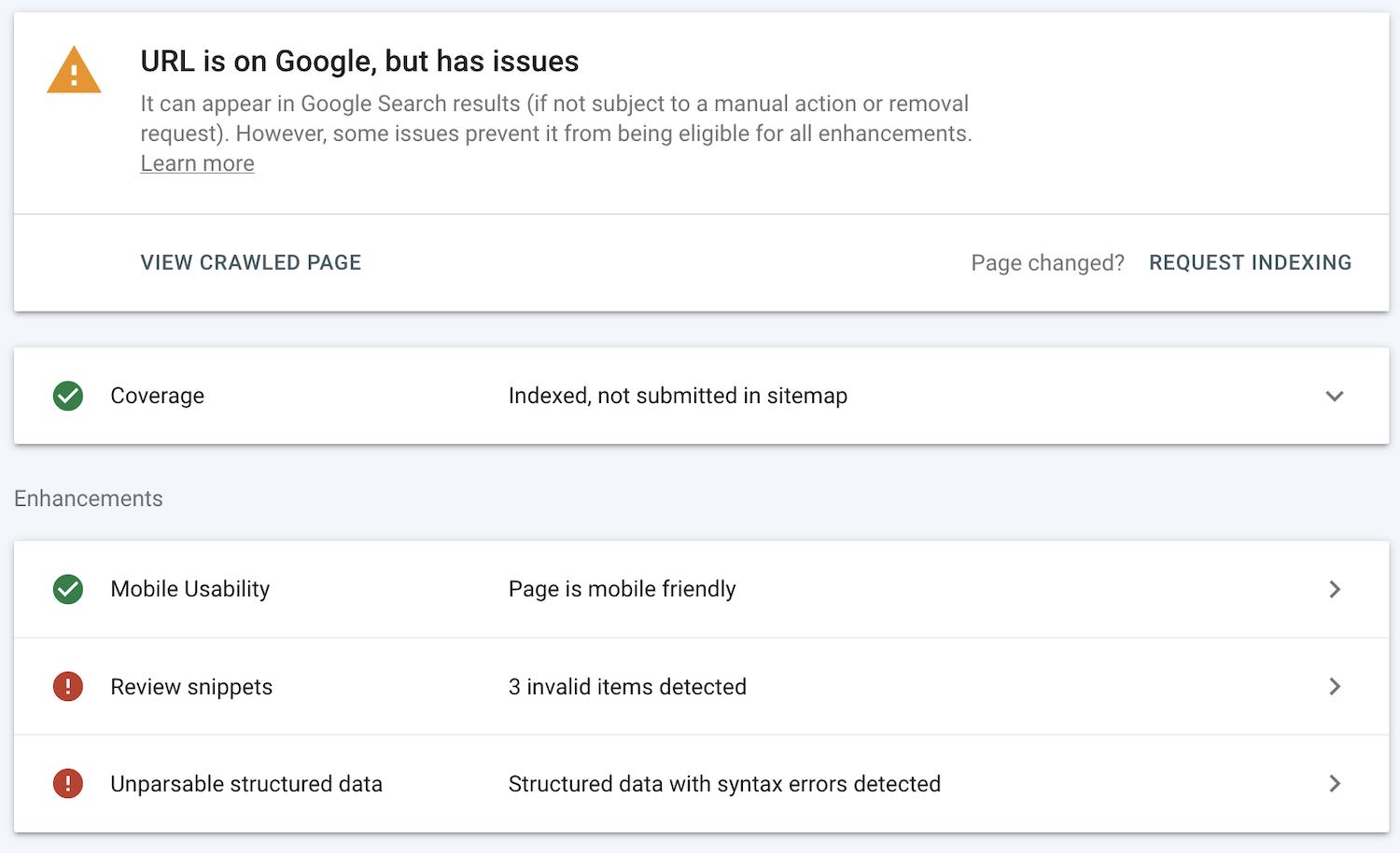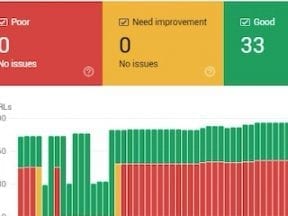Google Search Console is essential for optimizing organic rankings because its data comes straight from Google itself. No other tool provides Google’s direct experience in crawling, indexing, and ranking your site.
Getting started with Search Console is easy.
I’m a professional search optimizer who relies on Search Console near daily. Here are my six most valuable reports on that platform.
Performance Report
The Performance report (Overview > Performance) offers 16 months of ranking data, showing which search queries drive clicks to your site. The report provides the number of clicks for every query and page within the set timeframe, the number of impressions the page’s snippet received, the average click-through rate, and the average position.
Search Console is the only reliable way to know which queries send clicks to your site and the rankings of pages from those queries. Google Analytics has long hidden organic search query info behind “not provided.”
The Performance report also lists the devices people use to access your site and their countries. You can also see the clicks and positions of your rich snippets.
Use the Performance report to monitor your rankings, improve organic traffic, and identify pages that need updating.
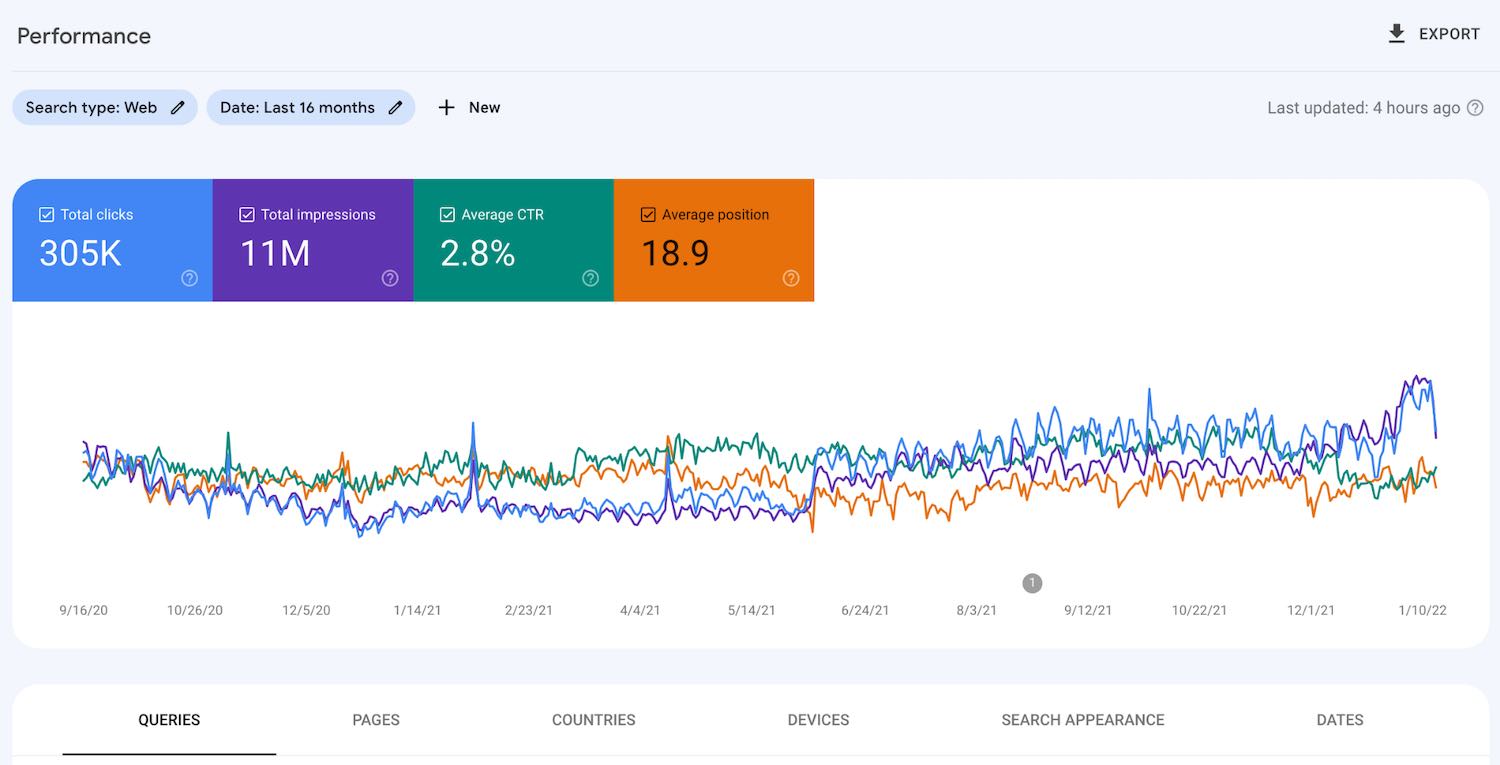
Use the Performance report to monitor rankings, improve organic traffic, and identify pages that need updating.
Links Report
The Links report (Links) shows all external and internal links to your site.
The “External links” and “Internal links” sections both provide “Top linked pages” — pages with the most links from other sites and from your own site.
“Top linking sites” lists the websites that link most heavily to yours. For example, the report might show that Wikipedia linked to 10 of your pages, and Yahoo Finance linked to three. Clicking “More” on this section produces a listing of all pages from a particular domain that link yours.
The “Top linking text” section shows the most popular link (anchor) text. Likely the most common is your company name or a version of it. To filter the link text for keywords, click into the report and then on the upside-down triangle. Choose “Link text” and type a word or phrase on “Filter by Link text.”
Coverage Report
The Coverage report (Index > Coverage) shows indexing info of all URLs — which pages on your seit Google can and cannot crawl and index, and why.
The report displays common errors and crawl blockers, such as soft 404s, redirect mistakes, and blocks from robots.txt directives and noindex tags. Review this section regularly to identify accidental blocks that impact performance. Check the box that says “Excluded” and review the list.
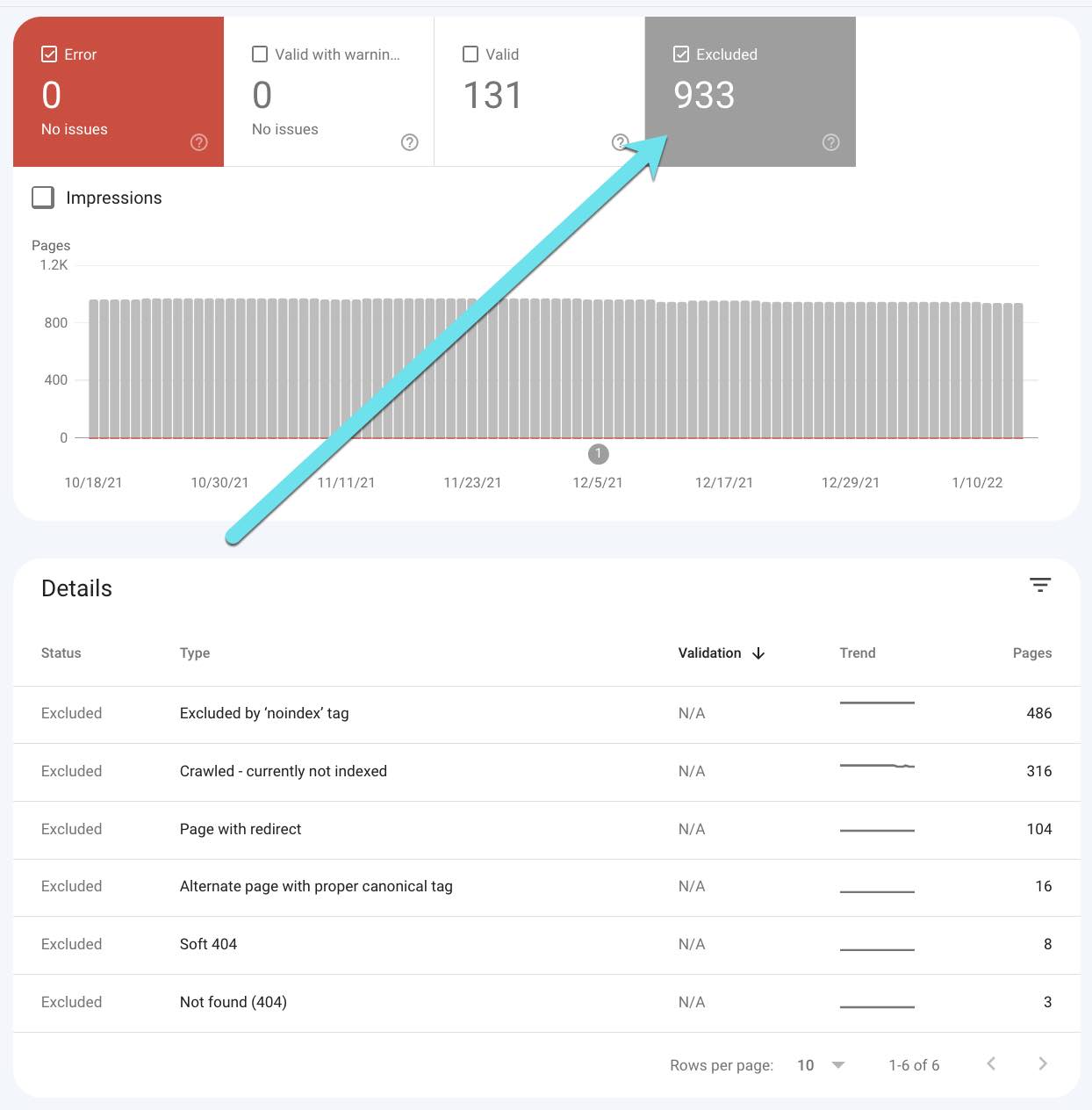
The Coverage report shows indexing info of all URLs on your site — which pages Google can and cannot crawl and index, and why.
URL Inspection
URL inspection provides data for a specific page on indexation — whether Google has discovered, crawled, and indexed the page — and mobile usability.
Use this tool, also, to identify a problem with a single page or type (such as product detail pages) and issues with code, structured data, and meta tags.
Experience Section
The Experience section addresses visitors’ experiences on your site. The section consists of three reports:
- Page Experience provides a summary of how your site serves visitors. Google flatly states that this is a ranking signal. A poor rating is likely hurting your rankings.
- Core Web Vitals measures and reports on the speed, responsiveness, and stability of your pages.
- Mobile Usability shows which pages have problems when viewed on smartphones.
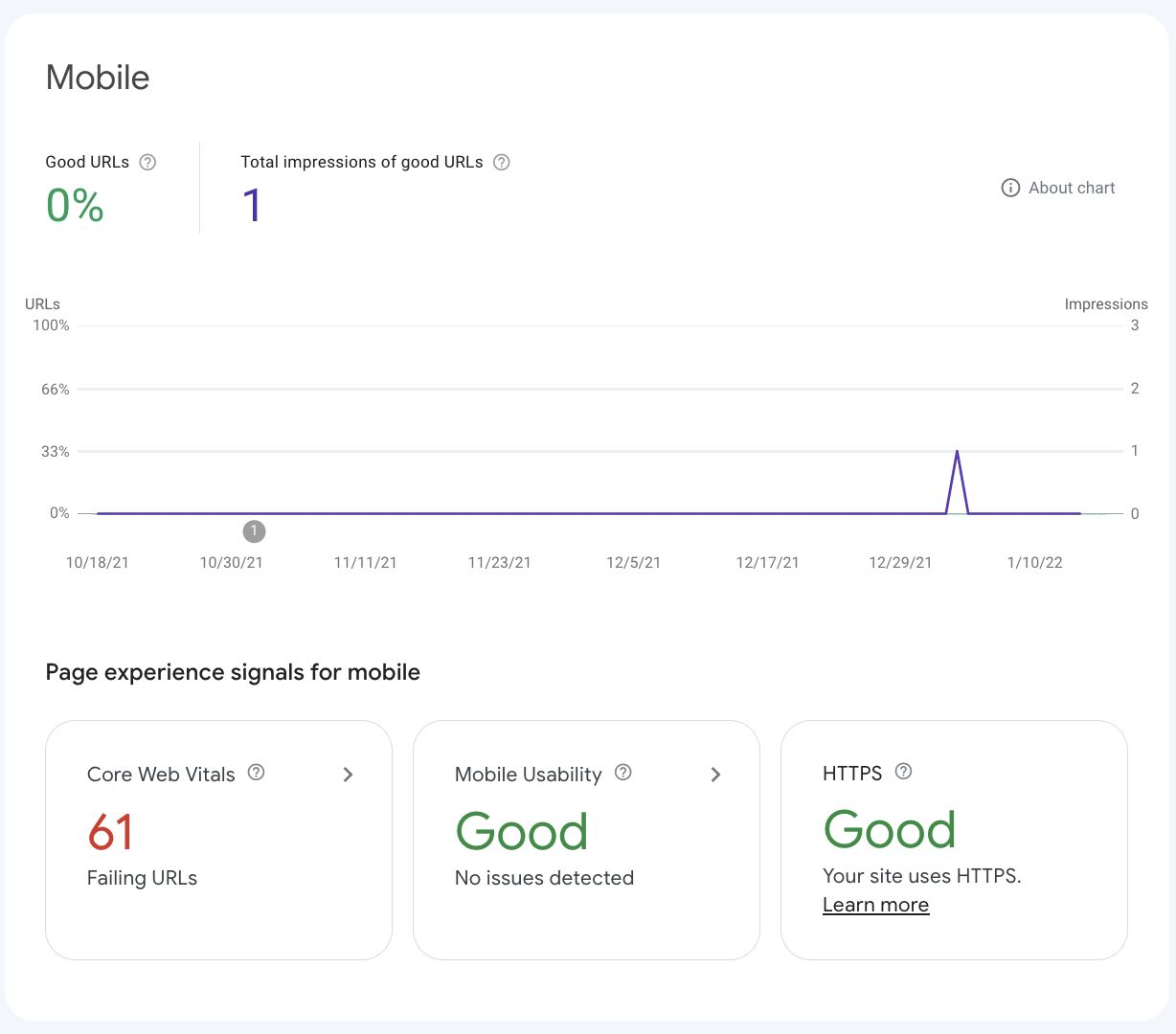
The Experience section consists of three sections: Page Experience, Core Web Vitals, and Mobile Usability.
Manual Actions
The one sure way to know if Google has assessed a manual penalty — i.e., banned your site — is to check the “Manual actions” report (Security & Manual Actions > Manual actions). It’s Google’s way of communicating a penalty and high-level info on resolving it.

